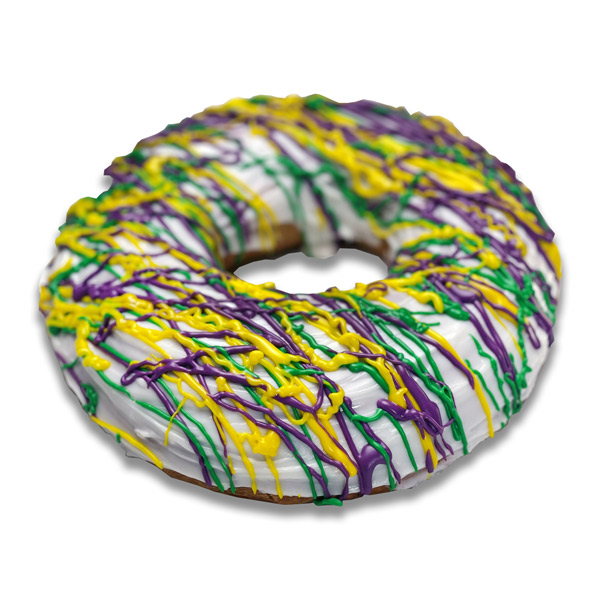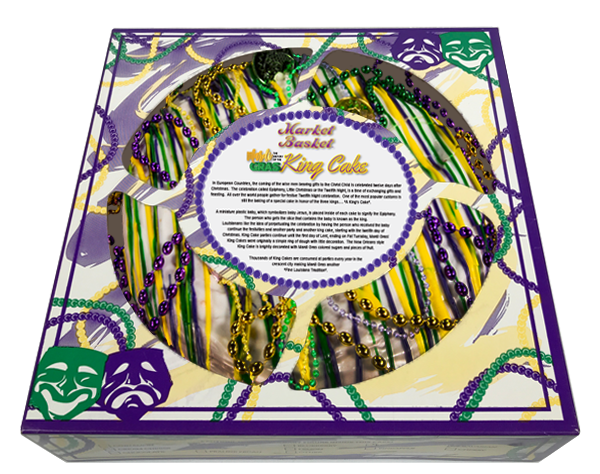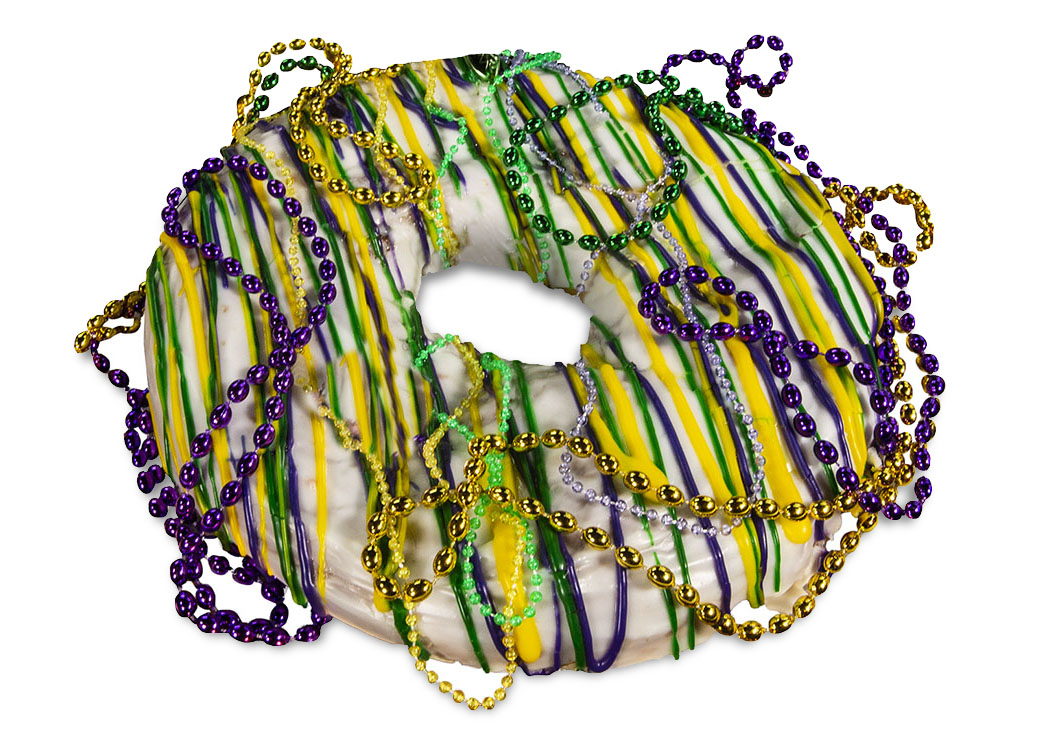Description
King Cake History
In European Countries, the coming of the wise men bearing gifts to the Christ Child is celebrated twelve days after Christmas. The celebration called Epiphany, Little Christmas or the Twelfth Night, is a time of exchanging gifts and feasting.
All over the world people gather for festive Twelfth Night celebration. One of the most popular customs is still the baking of a special cake in honor of the three kings… “A King’s Cake.”
The Europeans hide a bean inside their cake and the person receiving the bean must portray one of the kings. Latin-American people put a small figure inside the cake representing the Christ Child. It is said that a year of good fortune awaits the lucky person who gets the figure.
Louisianans like the idea of perpetuating the celebration by having the person who received the baby continue the festivities and another party and another king cake, starting with the twelfth day of Christmas. King Cake parties continue until the first day of Lent, ending on Fat Tuesday, Mardi Gras! King Cakes were originally a simple ring of dough with little decoration. The New Orleans style King Cake is brightly decorated with Mardi Gras colored sugars and pieces of fruit.
The carnival colors are purple (for justice), green (for faith) and gold (for power).







